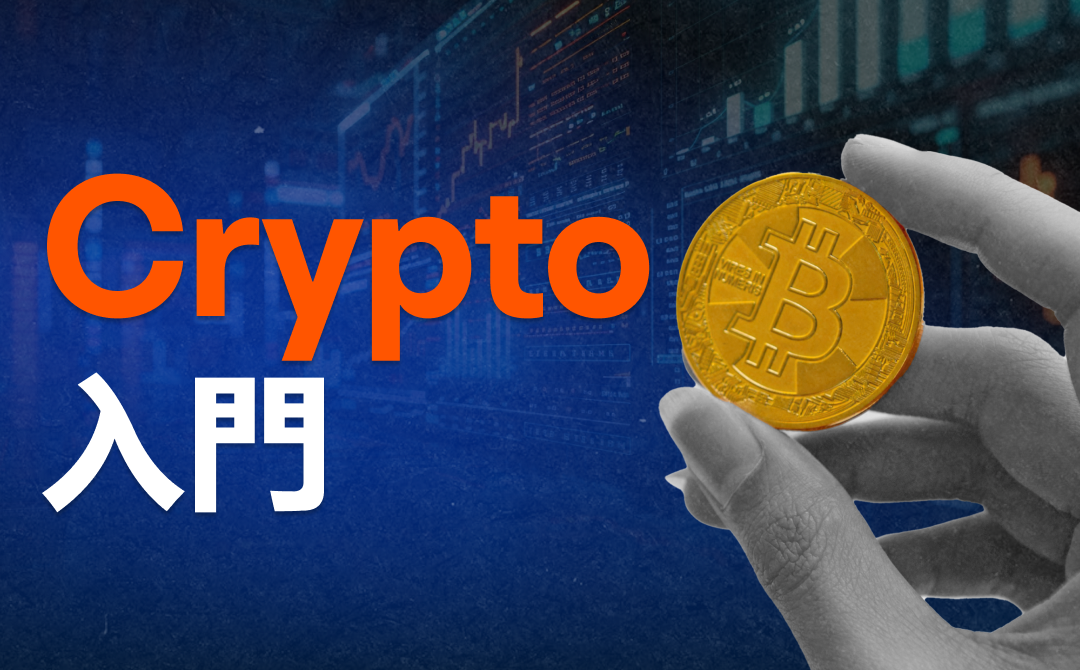騰訊高管稱,資本支出主要用於採購GPU,並帶來了高回報。隨着DeepSeek技術突破,GPU資源利用效率提升,無需按原預期大規模增購GPU。AI增強技術提升廣告主投資回報率,助力騰訊廣告增長率超行業水平,同時AI亦助力遊戲業務,去年底遞延收入(遊戲爲主)同比增長高雙位數,預計在今明年逐步轉化爲報告收入。AI成重點投資領域,同時會兼顧股東回報。
19日週三, $騰訊控股 (00700.HK)$ 發佈去年四季度及2024全年業績,業績顯示,騰訊Q4凈利潤同比增90%,全年資本支出同比暴增221%創新高。
 對於資本支出,騰訊高管在業績發佈會上指出,研發支出並不會對利潤率構成壓力,資本支出主要用於採購GPU,用來支持廣告和遊戲業務、大語言模型訓練、雲業務,這些資本支出實際帶來了良好利潤率和高回報。另外,隨着DeepSeek技術突破,行業整體(包括我們)可更高效利用現有GPU資源,提高大模型訓練效率,無需按原預期大規模增購GPU。
對於資本支出,騰訊高管在業績發佈會上指出,研發支出並不會對利潤率構成壓力,資本支出主要用於採購GPU,用來支持廣告和遊戲業務、大語言模型訓練、雲業務,這些資本支出實際帶來了良好利潤率和高回報。另外,隨着DeepSeek技術突破,行業整體(包括我們)可更高效利用現有GPU資源,提高大模型訓練效率,無需按原預期大規模增購GPU。
廣告業務方面,騰訊指出,公司廣告增長率超越行業平均水平,部分原因是騰訊的AI增強技術爲廣告主提供了更高的投資回報率(ROI)。
遊戲業務方面,騰訊高管稱,去年年底,公司遞延收入(主要來自遊戲業務)同比增長高雙位數,預計在2025年上半年、下半年及2026年部分時間逐步轉化爲報告收入。今年春節期間,公司五款最高收入遊戲日活用戶數同比上升,顯示遊戲受歡迎,是積極的領先指標。遊戲業務將從AI技術增強中直接和間接受益。
電商戰略方面,騰訊高管表示,小程序商店是騰訊長期戰略方向。例如紅包禮品功能,很多人用該功能給朋友送禮,朋友會輸入自己的收貨地址,這實際上幫騰訊完善了配送地址圖譜,而且讓許多已經輸入地址的用戶更容易完成交易。而且收禮人還可能繼續將禮物轉贈他人。
AI方面,騰訊高管稱,可以在微信和QQ中部署AI代理,未來大模型競爭中,騰訊優勢之一在於微信用戶日均使用時長、打開應用頻率都很高。其次,微信內活動豐富,涵蓋社交、娛樂、學習等,AI代理可深度融入小程序生態系統,滿足用戶多樣化需求。
資本配置方面,騰訊透露,AI是重點投資領域。既要投資於未來(如AI),同時也要通過股息和股票回購爲股東提供當期回報。今年已宣佈將支付410億港元股息,股票回購規模從去年年的1000億港元減少至800億港元,留出200億港元靈活性緩衝,根據實際情況決定是否進一步投資AI。
以下爲問答全文:
Q1:關於AI資本支出對財務的影響。隨着我們在AI領域的資本支出增加,額外的折舊和研發費用將不可避免地拖累我們的利潤率。過去幾年,隨着我們專注於高質量增長,利潤率有了顯著提升。那麼,在未來,我們如何在增長和盈利能力提升之間取得平衡?
人們常說,人生中唯一不可避免的事情是死亡和稅收。作爲公司的管理層,如果我們說利潤率下降是不可避免的,那顯然是不負責任的。而我們確實不認爲這是必然的。
關於AI相關的研發支出,實際上,在騰訊的整個發展歷程中,我們每年都會在不同的項目上增加研發投入。因此,我們並不認爲研發支出本身會對我們的利潤率構成壓力。
相比之下,資本支出(CapEx)是一個更復雜的話題。確實,我們在去年第四季度將資本支出提升到了一個更高的穩定水平,隨着時間的推移,這些額外的資本支出將在未來幾年內逐步轉化爲額外的折舊。
但值得深入探討的是,這些資本支出具體用在了哪裏,從而判斷折舊是否真的會對利潤率產生壓力。資本支出的最直接用途是購買GPU,以支持我們的廣告技術和遊戲業務。從我們的業績數據可以看出,這些資本支出實際上帶來了良好的利潤率和高回報。劉熾平在之前的討論中也提到,這些投資是有效的。
第二個用途是用於大語言模型(LLM)訓練的GPU。去年曾有一段時間,業界普遍認爲每一代新語言模型都需要數量級更多的GPU資源。然而,隨着DeepSeek的技術突破,這種趨勢發生了變化。如今,整個行業,包括我們在內,都能夠利用現有的GPU資源大幅提高大語言模型訓練的效率,而不需要按照過去預期的速度增加GPU採購。
第三個資本支出方向與我們的雲業務相關。我們購買GPU服務器,然後將其租給客戶,從而產生回報。儘管這可能不是我們業務組合中回報率最高的板塊,但它仍然是一個正向回報的業務,能夠覆蓋GPU的成本以及相關的折舊費用。
最後,短期內可能存在壓力的是用於to C(消費者端)推理的資本支出。這確實是一個額外的成本壓力,但我們認爲這是一個可控的成本壓力,因爲這部分資本支出只是總資本支出的一部分。此外,我們對未來持樂觀態度,因爲我們相信,隨着時間的推移,我們面向消費者的推理活動將像騰訊其他平台的活動一樣,通過廣告收入和增值服務實現變現。
總的來說,雖然我們理解您對資本支出增加及其對長期盈利能力影響的擔憂,但我們實際上非常樂觀,認爲我們可以在保護利潤率的同時繼續推動業務增長。
在面向消費者的推理產品中,實際上有很多方法可以通過技術手段、軟體優化和更好的算法來降低單位成本。這也是一個需要牢記的因素。
Q2:關於小程序商店。我們在第三季度推出了微信小程序商店和紅包禮品功能,這些功能受到了用戶的熱烈歡迎。請問管理層能否分享一下今年在電商領域的戰略和關鍵舉措?
小程序商店對我們而言是一個長期戰略方向。任何具體的舉措都只是我們在長期內構建這一生態系統的衆多努力之一。
我想提醒大家小程序商店的定位。它實際上是一個統一的平台,將整個微信生態系統的各個部分連接在一起。通過標準化的商品信息數據結構,商品信息可以在微信生態系統的不同組成部分之間自由流動。其目的是讓消費者能夠找到優質的商品和商家。
如果你觀察微信生態系統的不同組成部分,會發現其中包括社交基礎設施、內容、搜索、小程序、交易平台以及企業微信。這些組成部分共同構成了一個統一的微信生態系統。
小程序商店確實希望吸引用戶深入參與。如果你看一下紅包禮品功能,它實際上是微信生態系統社交組件中的一個功能。這只是我們衆多功能中的一個,目的是充分利用整個微信生態系統的潛力。
從初步反饋來看,正如你所說,這一功能受到了用戶的熱烈歡迎。我們看到很多人在春節期間使用這一功能給朋友送禮。這種禮品贈送行爲實際上也放大了優質產品的口碑效應,因爲你只會贈送你認爲真正好的產品。
對於收到禮物的人來說,這種行爲會進一步放大初始購買的影響。他們會輸入自己的收貨地址,這實際上幫助我們構建了一個配送地址圖譜的基礎設施,從而讓許多已經輸入地址的用戶更容易完成交易。
通常,收到禮物的人有時還會進一步將禮物贈送給他們的朋友。因此,總的來說,我認爲這種口碑效應非常好,商家的反饋也很積極。但這只是整個微信生態系統中的一個組成部分,對吧?
因此,我們認爲隨着時間的推移,我們會繼續耐心地構建這個生態系統和平台,並將其視爲一場馬拉松,而不是短跑。我們相信,在這條道路上我們可以走得很遠、很久。如果你看一下小程序商店的GMV(商品交易總額),它在去年第四季度繼續保持非常快速的增長。
Q3:關於面向企業的服務。我想請問管理層能否詳細說明一下過去兩個月內Ask服務的需求和採用率情況,以及您對未來幾個季度需求增長的展望。此外,除了提到的騰訊會議和騰訊文檔之外,能否分享一些我們計劃推出的Saas產品解決方案,這些方案可能有助於向雲客戶進行交叉銷售和向上銷售?
關於iService的需求,實際上非常強勁。我們目前實際上是供應受限的。去年第四季度資本支出大幅增加的部分原因是我們收到了一批緊急訂單,用於購買GPU以支持推理和雲服務。只有當我們將這些GPU安裝到數據中心後,才能充分滿足iService需求的增長,而這需要一些時間。
因此,我想說,在第一季度我們可能還沒有完全捕捉到這些需求的增長,但隨着時間的推移,隨着GPU的到貨和安裝,我們將能夠滿足更多的需求。
關於不同的軟體解決方案,您提到了騰訊會議和騰訊文檔,而企業微信是另一個非常強大的產品。事實上,這是我們收入最高的Saas產品,其收入在上個季度同比增長了一倍。
除此之外,我們還看到安全通行軟體和音視頻通行軟體,包括實時通信和直播軟體,這些產品也在銷售給我們的雲客戶。其中許多產品還可以通過AI技術賦能,爲客戶提供額外的價值。
在面向消費者的應用方面,我們確實有大量不同的消費者應用,您可以期待未來會有更多新產品推出。
Q4:關於面向消費者的應用。除了混元大模型在過去幾個月在海外取得了顯著突破外,還有EMA Copilot(一款AI助手)和增強搜索功能。我想知道這些產品將如何隨着時間的推移逐步發展,以及混元是否會定位爲整合所有搜索和發現入口的AI網關,從而與微信超級應用形成互補?
我認爲AI實際上還處於非常早期的階段,因此很難談論最終的狀態會是什麼樣子。但我想說的是,每一款產品都會繼續發展,成爲對用戶非常有用甚至更強大的工具。
例如,元寶可以成爲一個非常強大的AI原生助手。郵件Copilot可以成爲您的個人知識庫,也可以作爲團隊協作的共享知識庫。微信未來可能會推出許多不同的功能。
除此之外,我認爲我們的其他產品也會融入AI體驗,包括QQ、瀏覽器等。因此,我們將看到越來越多的面向消費者的AI產品。同時,每一款產品都會繼續演進。
如果你看一下元寶,它確實整合了許多不同的功能,但它不會是唯一的入口。我們的每一款產品都會嘗試尋找獨特的用例,利用AI爲用戶提供卓越的體驗。與此同時,我們的不同產品也可以協同工作,爲AI產品的用戶增長提供合適的路徑。
因此,我認爲這將是一個持續演進的過程,這將有助於我們構建一系列面向消費者的AI解決方案和應用。
Q5:我的問題實際上是上一個問題的延續。我們看到騰訊元寶自今年以來表現出非常強勁的增長勢頭。請問管理層能否詳細說明在競爭激烈的市場中進一步增長用戶群的策略?元寶是AI聊天和AI搜索的結合體,請問騰訊對這兩部分中的哪一部分更感興趣?此外,與此相關的是,未來AI搜索在整個搜索市場中的份額(按搜索查詢量計算)會有多大?以及騰訊計劃如何未來實現AI搜索的變現?
目前,元寶是一個結合了聊天和搜索功能的產品,但隨着時間的推移,它將會發展成爲一個多功能AI助手,服務於不同類型的用戶。
它的用戶範圍將涵蓋學生(用於學習)、知識工作者(用於完成工作任務)以及需要進行深度研究的用戶(用於深入探索不同主題)。
因此,元寶將擁有許多不同的應用場景。元寶的獨特優勢在於,一是創新能力,通過不斷添加新功能和特性來滿足用戶需求。二是內容生態,元寶可以訪問騰訊的內容生態系統,尤其是公衆號和視頻號,這些是高質量的信息來源。三是多模型策略,騰訊的多模型策略使用戶能夠訪問最佳模型,並利用模型組合來滿足複雜需求。
未來,正如我之前提到的,我們許多高日活躍用戶(DAU)產品將開始添加不同的AI功能和特性,其中一些產品將與元寶打通,形成協同效應。我們的產品陣列將相互支持,共同發展。
因此,我們認爲這些持續的努力將使我們在競爭中保持優勢,同時我們也擁有一些獨特的優勢。
關於您提到的更廣泛的問題,即AI提示(AI prompts)與傳統搜索的關係,我認爲不同的人會有不同的看法,這需要時間來驗證。但從宏觀角度來看,如果我們回顧網絡搜索的歷史,包括早期的網頁目錄,以及我們使用AI提示與傳統搜索的行爲對比,我認爲AI搜索有可能取代傳統搜索。
因爲歸根結底,網頁目錄、傳統搜索和AI提示都是訪問互聯網知識圖譜的機制。但在這些機制中,AI提示帶來了新技術、新效率,以及通過代理AI實現的新的交易能力,這些是傳統搜索無法實現的。
關於AI提示的變現方式,時間會給出答案,但我們已經在西方市場看到,最初的變現模式是通過訂閱模式,隨後是效果廣告。在中國,我認爲會從效果廣告開始,隨後是增值服務。
Q6:關於廣告業務。我們看到廣告業務實現了健康的17%增長,是否可以將第四季度的增長率視爲2025年全年的參考?此外,關於AI驅動的廣告增強技術,我們從Meta的機器學習和Advantage+購物廣告中看到,這些AI技術可以推動全球同行的增長加速。那麼,隨着更多AI應用在今年落地,廣告業務是否有可能進一步加速增長?
關於廣告業務,我們對第四季度的增長率感到非常滿意,這一增長率明顯超過了行業平均水平。增長主要來自有機增長,而非外部因素的推動,並且增長覆蓋了我們監測的幾乎所有行業。
我們認爲,這是因爲在我們監測的幾乎所有行業中,我們部署的AI增強技術爲廣告主提供了比以往更高的投資回報率(ROI),同時也優於其他平台的表現。您將我們與一些全球同行進行了比較,我認爲這是正確的做法,但需要注意的是,全球同行在其產品演進的早期階段往往傾向於完全加載廣告。
例如,在短視頻領域,我們則傾向於逐步增加新產品的廣告加載量,這一策略仍然保持不變。因此,我認爲我們在廣告加載速度上與一些全球同行存在差異。但總體而言,只要宏觀經濟環境沒有發生劇烈變化,我們對廣告業務的表現感到相當滿意。
Q7:關於遊戲業務。我們應該如何看待今年國內和國際遊戲業務的增長前景,尤其是考慮到今年下半年國內遊戲業務的高基數效應?此外,AI對遊戲業務的影響是什麼?您提到了遊戲壽命的延長,但也提到了競爭和成本結構的變化。
關於遊戲業務,您提到了今年下半年的高基數效應。我想這是這個行業的「詛咒」——如果你做得好,人們就會擔心一年後的基數效應。
但我想指出一些關於我們遊戲業務的可觀察事實,一個是遞延收入增長。去年年底,我們的遞延收入(其中大部分來自遊戲業務)同比增長了高雙位數百分比。這些遞延收入將在2025年上半年、2025年下半年以及2026年部分時間內逐步轉化爲報告收入。
一個是春節期間的用戶行爲。春節期間的用戶行爲是衡量遊戲受歡迎程度的重要指標。今年春節期間,我們五款最高收入遊戲的日活躍用戶數(DAU)均同比上升,這是一個積極的領先指標。
此外,還有一些主觀看法。我們主觀上認爲,有幾款遊戲正在逐步發展成爲長青遊戲,其中我們提到了一款遊戲——《三角洲特種部隊》。這是一個非常重要的機會和增長動力。
其次,正如我們在準備好的發言中提到的,我們有許多新遊戲正在開發中,我們對這些遊戲充滿期待。
第三,我們相信遊戲業務將直接或間接地從AI技術增強中受益。一是直接方式,遊戲開發者利用AI技術更快地創建更多內容,並更有效地服務更多用戶。
二是間接方式,這可能是一個跨越數十年的趨勢,而不僅僅是今年下半年的故事。隨着人類更廣泛地使用AI,我們認爲人們會有更多時間,並且對高自主性活動(如遊戲)的需求也會增加,因爲AI賦予了人們更多的能力和自由。
因此,對於用戶來說,互動娛樂(如遊戲)是他們以高自主性方式(而非被動方式)表達自我的最佳途徑之一。
我想補充一點,當我們思考競爭動態時,我們認爲AI將使長青遊戲更加持久。我們已經看到AI如何幫助我們執行和放大我們的長青戰略。其中一部分體現在內容生產中:現在可以在更短的時間內生產出高質量的內容,從而以更高的頻率更新遊戲,保持用戶的興趣。
在PvE(玩家對環境)體驗中,通過更智能的機器人,遊戲可以變得更加刺激,更像PvP(玩家對玩家)。而在PvP中,AI可以顯著改善匹配、平衡和新手引導等方面,從而提升用戶體驗。所有這些都將幫助已經受歡迎的大規模遊戲變得更加流行,對用戶更具吸引力。
Q8:關於商業支付業務。很高興看到商業支付收入從第三季度的負增長轉爲第四季度的基本持平。能否分享一下您對2025年第一季度商業支付活動趨勢的觀察?
關於商業支付,我們的觀察是,交易量實際上在進一步增長,但平均銷售價格(ASP)仍然承受較大的定價壓力。因此,從價值角度來看,收入仍然基本持平。
我們對這一趨勢的解讀是,消費者的消費意願正在恢復,但在供應端仍然存在較大的定價壓力。因此,希望這是一個好跡象,表明我們正接近艱難市場的尾聲。隨着消費者需求的持續改善,供應商之間的競爭可能會逐漸緩和,最終轉化爲價值增長。但這一點我們還需要在未來進一步觀察。
Q9:關於AI和資本支出(CapEx)的後續問題。您提到2025年的資本支出與收入比率將保持在低雙位數,這與2024年的比率相似。這一指引意味着資本支出增長將顯著放緩。能否詳細解釋這一資本支出與收入比率背後的邏輯?是因爲您預見到生成式AI需求增長放緩,還是因爲2024年的大幅增加已經足以滿足2025年的生成式AI需求?
是的,我們在2024年末的資本支出增加應該足以滿足2025年生成式AI以及其他業務的需求,並在新的正常運營水平下保持可持續發展。我們在訂購GPU服務器和將其完全部署到數據中心之間存在時間滯後。因此,在第四季度和第一季度的一部分時間裏,我們處於這種狀態。但正如劉熾平提到的,到第一季度末,我們正在部署這些GPU,並從中受益,既滿足了我們內部對元寶推理需求,也滿足了外部騰訊雲客戶的需求,通過租賃GPU服務器產生直接收入。
如果從更宏觀的角度來看,去年有一段時間,人們問我們的資本支出是否足夠,無論是與中國同行還是全球同行相比。現在,在上市公司中,我認爲我們在第四季度的資本支出是中國科技公司中最大的。因此,我們在中國同行中處於領先地位。
總體而言,中國科技公司的資本支出佔收入的比例低於一些西方同行。但我們認爲,這一現象的原因是中國公司普遍優先考慮效率和GPU服務器的高效利用,這並不一定會影響技術的最終效果。DeepSeek的成功實際上象徵並鞏固了這一點。
補充一點是,這是一個非常動態的情況。我們提供的實際上是我們當前的預期,但坦率地說,這種預期可能會發生變化。如果突然出現需求激增,我們肯定會增加GPU的訂單。因此,我認爲我們將保持高度靈活性和動態響應能力,以應對市場變化。
Q10:關於廣告業務的後續問題,請問管理層能否分享更多細節?您提到大多數行業的廣告支出都有所增加,那麼哪些垂直行業受益最多?此外,在廣告主行爲方面,我們注意到視頻號、媒體廣告、搜索廣告等都有顯著增長。請問廣告主的行爲發生了哪些變化,這些變化如何推動了廣告收入的增長?
關於您的廣告業務問題,我們看到同比增長的行業類別包括電商、金融、快消品、遊戲、本地服務、教育和醫療等。這是一個涵蓋廣泛的行業列表。
隨着我們部署這些AI增強技術,通常我們首先在視頻號中應用,然後逐步滲透到微信生態的其他部分、騰訊的其他產品以及我們的廣告網絡中。因此,隨着時間的推移,這些技術帶來的好處會越來越廣泛地被感受到。這是關於廣告業務的部分。
Q11:關於資本配置。管理層提到今年的股票回購將少於去年,但另一方面,股息將會增加。那麼,在資本配置方面,我們的優先級是什麼?同時,在當前AI行業需求強勁的背景下,我們應該如何看待併購投資?
關於資本配置,我認爲關鍵的原則是我們希望通過投資爲公司及股東創造回報。這意味着在不同時期,我們會投資於不同的領域。有些時候,我們會大量投資於生態系統和我們的核心業務。
我們曾經大量投資於生態系統合作伙伴,並建立了一個非常大的投資組合。隨後,我們開始通過股息和股票回購向股東返還現金。而現在,AI成爲了我們的重點投資領域,我們認爲AI在未來有很大的潛力爲公司創造回報。因此,我們現在的投資策略是:既要投資於未來(如AI),同時也要通過股息和股票回購爲股東提供當期回報。
我認爲這是我們的核心原則。如果從我們的財務能力來看,我們有非常強大的能力來實現這一目標,因爲我們在運營層面擁有非常強勁的現金流,同時還有一個龐大且價值可觀的投資組合,其中很大一部分是流動性很強的資產。
因此,我們有足夠的財務資源來投資未來,無論是AI還是其他必要的投資活動。我們的投資組合基本上是自給自足的,同時還能爲股東提供當期回報。
關於今年的資本配置,我們已經宣佈將支付410億港元的現金股息,並將股票回購規模從去年的1000億港元略微減少至今年的800億港元。這相當於爲我們留出了200億港元的靈活性緩衝,以便在今年內根據實際情況決定是否需要進一步投資AI。
如果對比過去兩年,去年我們支付的股息爲320億港元,股票回購爲1000億港元,總計1320億港元的目標回報。
今年我們的目標回報是800億港元(股票回購)加上410億港元(股息),總計1210億港元。如果加上去年股票回購的超額部分(150億港元),今年的數字實際上與去年的目標回報相似。
因此,我們正在努力在當期回報和未來投資之間提供一個非常好的平衡。同時,我們擁有非常強大的財務資源來實現這一目標。
Q12:關於支出和高利潤率業務以及變現的討論。鑑於過去幾年我們一直在追求高質量增長策略,並且我們也看到了利潤率擴張的故事——營業利潤增長快於收入增長。但我們也指出,隨着時間的推移,兩者之間的差距會逐漸縮小。因此,我想把這些點串聯起來,請問我們應該如何看待2025年及未來幾年的利潤率擴張故事?
從某種程度上來說,我們在過去兩年中能夠實現營業利潤率提升的一個關鍵原因是,我們享受了毛利率的提升。而毛利率提升的原因在於,雖然我們的基礎業務的綜合毛利率約爲50%,但許多新收入來源(貢獻了大部分收入增長)的毛利率高達70%到80%。
隨着這種收入結構的變化,毛利率被拉高,導致毛利潤增長快於收入增長。當然,隨着時間的推移,會出現基數效應,或者更準確地說,一種漸近效應。如果綜合毛利率逐漸接近增量毛利率,那麼綜合毛利率的改善速度必然會放緩。我認爲從長期來看,這是不可避免的。
但儘管如此,當我們觀察我們的高質量收入來源時,例如視頻號廣告、搜索廣告、增值金融服務、電商交易佣金以及自研遊戲,這些業務的增長速度通常快於整體收入,並且貢獻的毛利率遠高於綜合毛利率。因此,我們相信未來將繼續享受毛利潤槓桿,進而推動營業利潤槓桿的提升。
從漸進漸近的角度來看,收入增長會趨於平穩。當然,AI投資實際上會對這一趨勢產生一定的抵消作用。
Q13:關於AI和AI代理(AI agent)的。我們看到許多公司發佈了他們自己的大模型和AI代理。請問管理層如何看待未來大模型的關鍵競爭因素,以及我們的競爭優勢是什麼?我們應該如何通過增加更多功能和特性來提升未來的用戶參與度?
我認爲AI代理有很多種類型,對吧?AI代理本質上是一個利用模型能力並連接到不同軟體工具以完成複雜任務的模型。這是一個非常廣泛的概念。
你可以有獨立的AI代理,也可以有嵌入不同應用中的AI代理。我們認爲未來會有多種多樣的AI代理,但對於我們來說,我們將能夠通過以下方式構建獨立的AI代理。例如,利用高質量的模型。利用我們在不同軟體平台上的龐大用戶基礎,例如我們的瀏覽器、元寶等。
同時,即使在微信和QQ中,我們也可以部署AI代理。這些AI代理可以利用應用內的生態系統,通過完成複雜任務爲用戶提供卓越的服務。以微信爲例,首先,我們的優勢之一在於微信的用戶日均使用時長很高,用戶打開應用的頻率也非常高。
第二個優勢是微信內的活動非常多樣化,不僅僅是娛樂和交易,還包括社交溝通和內容消費。許多人在微信中進行工作、學習,還有大量交易通過微信完成。微信的小程序生態系統支持各種不同的活動。
因此,如果我們觀察小程序生態系統,我們可以輕鬆地基於模型構建一個AI代理,連接到許多不同的小程序,幫助用戶完成各種活動和複雜任務。我認爲這些都是我們目前非常獨特的優勢。
當然,這些體驗需要我們非常謹慎和耐心地構建,以確保爲用戶提供正確的體驗,同時高度重視他們的數據安全、安全感和舒適感。這些都是我們在構建這些產品時需要注意的事項。但隨着時間的推移,我認爲這些都是我們面臨的巨大機會。
想快速搵到業績重點?業績速遞幫你一網打盡!市場> 港股/美股> 業績 >業績速遞
編輯/Rocky












評論(4)
請選擇舉報原因